Chilkat Shawl. Wool Of Mt. Sheep. Item Number: E89193-0 from the National Museum of Natural History
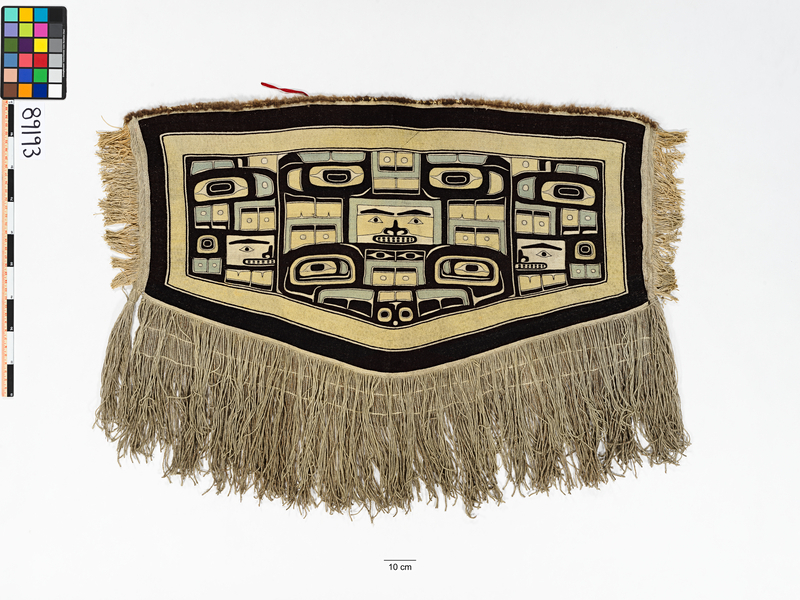
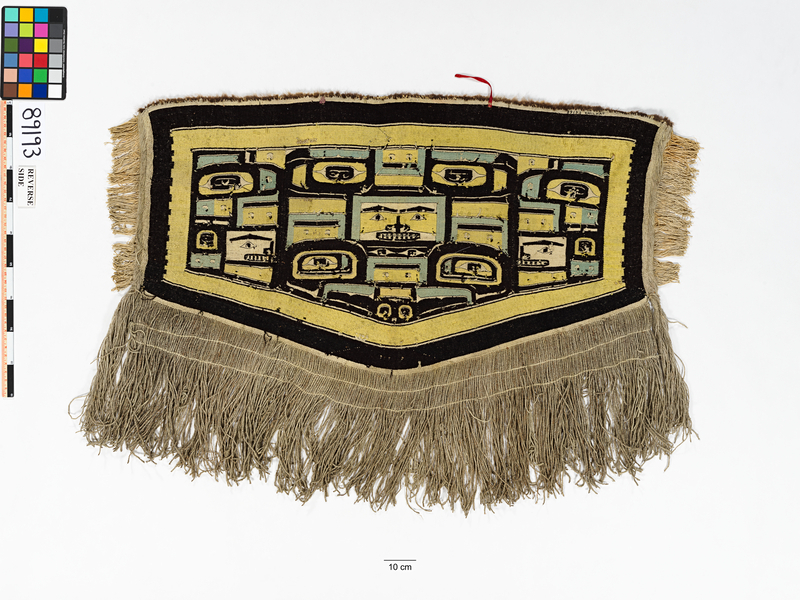
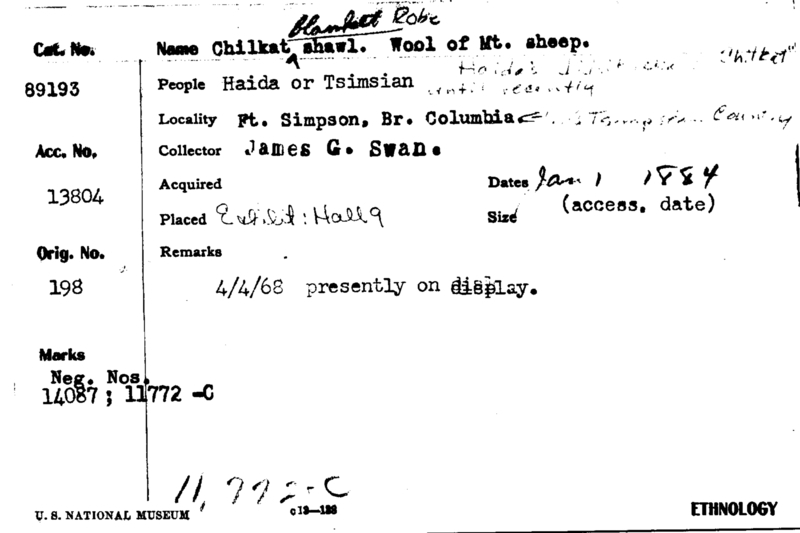
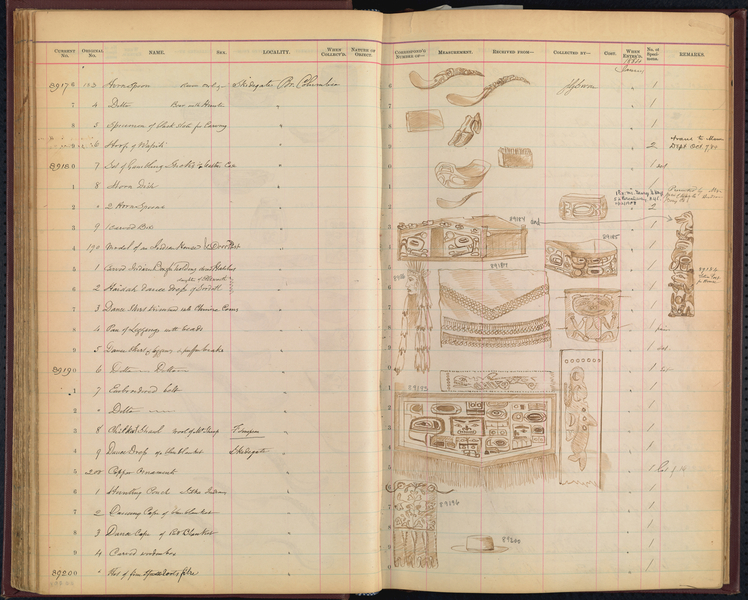
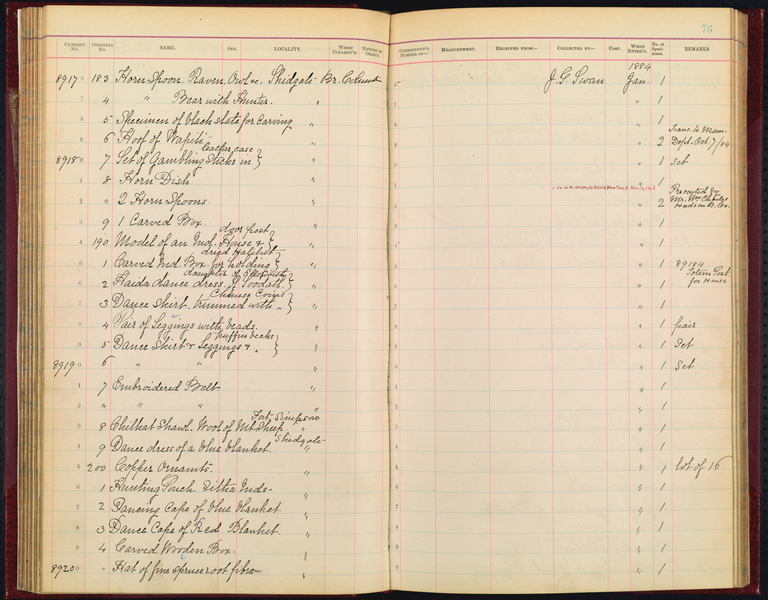
Notes
Blanket 89193 is similar in design to the one Illus. Fig. 564a, p. 374, in "The Chilkat Blanket" by George T. Emmons, Memoirs of the American Museum of Natural History, Vol. 3, part 4, 1907.Blanket robe woven of wool from mountain sheep and cedar bark fiber. The shape is pentagonal, with the bottom edge diverging from the rectangular form by dropping lower in the center, forming a chevron shape. The upper edge is bound by whip stitching a thin leather strip (0.5-0.8 cm wide) with brown fur attached so it makes a fur border. The two sides are finished with 10 cm long cotton fringe sewn to the sides. The bottom has a fringe (warp) of 50 cm long of natural off-white wool, with cedar bark fiber twisted with the fringes. In addition to the fringes and fur, the woven material has been finely finished with a natural off-white wool border reinforced on the sides with additional strands. The design is in dyed wool in black, yellow, and turquoise, along with natural off-white. The design has a central panel and two side panels, separated only by a thin off-white line, the whole framed by a double border of yellow on the inside and blank on the outside with thin lines of off-white and black to separate the border colors and the border from the design. There is a 20 cm long piece of red binding tape attached at one end at the back of the shawl and a tab where a second one apparently was attached earlier.Per artists Delores Churchill and Evelyn Vanderhoop, 2015, the side fringes were added later to this blanket and are not traditional.Alan Zuboff, Linda Wynne, Shgen George, weaver, and Ruth Demmert made the following comments during the Tlingit Recovering Voices Community Research Visit, March 13-March 24, 2017. The blanket is Tlingit made and features a diving whale design. The diving whale design is not clan-specific, and so weavers did not need permission to use it, which allowed for widespread use. The Tsimshian started doing these designs first, and a Klukwan leader got ahold of one of these items, and his wife took it apart to figure out how it was made. This object may have been an early design later widely adopted by the Tlingit. The fur on this object may be sea otter or beaver, but it may be too short for sea otter. The side fringe is made of twine and discoloration of the fringe may be due to storage.
Item History
- Made in Fort Simpson, British Columbia, Canada
- Collected by James G. Swan in Fort Simpson, British Columbia, Canada
- Received on December 21, 1883
What
- Name
- Chilkat Shawl. Wool Of Mt. Sheep.
- Identification Number
- E89193-0
- Type of Item
- blanket
Who
- Culture
- Tsimshian ?, Haida ? or Tlingit ?
- Field Collector
- James G. Swan
Where
- Holding Institution
- National Museum of Natural History
- Made in
- Fort Simpson, British Columbia, Canada
- Collected in
- Fort Simpson, British Columbia, Canada
When
- Acquisition Date
- on December 21, 1883
Other
- Accession Number
- 013804